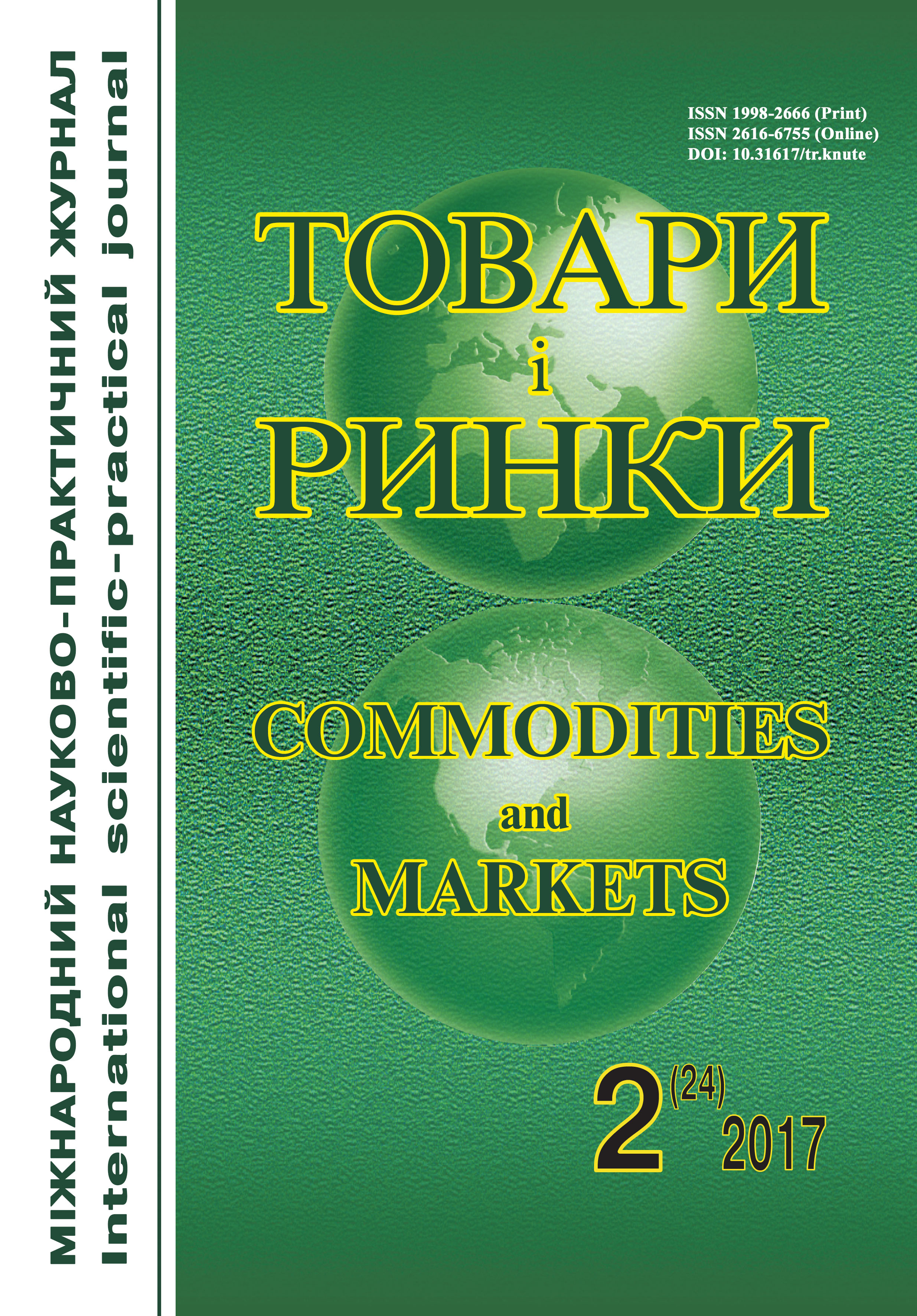Kinetics of fermentation of lactose whey
Keywords:
cheese whey, temperature, pH, enzyme, fermentolysis, lactose.Abstract
Background. Production volumes of whey and all kinds of raw material sources in Ukraine constitute about 200 tons per yearnow. In the European Union each year milk industry produces 75 million tons of whey, about 40 % of the amount of whey is utilized. One promising direction that extends the use of whey is getting low-lactose products resulting from the use of enzymes of directed action, including based on propionic acid bacteria of the genus Propionibacterium freudenreichii subspecies shermanii.
The aim of the study is to research of the effect of the temperature, pH environment, concentration of the added ferment and the time on the lactose content in the milk whey.
Material and methods. The content of lactose was determined by refractometric method [14]. Repetition of experiments and analyzes is threefold.
Results. The influence of temperature, pH of the medium, concentration of the introduced enzyme preparation on the change of lactose content in milk whey was studied. To construct a trend for the development of fermentative hydrolysis of lactose in milk whey, measurement of the results was carried out at regular intervals of 22 hours. The recommendations for the cultivation of bacteria of the genus Propionibacterium freudenreichii subspecies shermanii were summarized, and the boundary conditions of the enzyme activity on their basis were determined. According to the recommended concentrations of the enzyme preparation in the investigated milk whey, temperature regimen, pH value of the medium and the presence of activators, rational technological regimes of fermentolysis have been substantiated.
Conclusion. It was found that at t = 50 оС, pH 5–5.5, the presence of 2 % CaCO3 solution, themass fraction of lactose decreases from 5.7 to 2–2.2 %. and achievement of maximum effect for the chosen technological parameters occurs after 12 hours. The obtained data will be used to optimize the lactose fermentolysis process.
References
DSTU 7515:2014. Syrovatka molochna. Tehnichni umovy. Kyi'v : Derzhspozhyvstandart Ukrai'ny. 2013. 14 s.
Jakubchak O. M. Veterynarno-sanitarna ekspertyza z osnovamy tehnologii' i standartyzacii' produktiv tvarynnyctva. Kyi'v : Bioprom, 2005. 800 s.
Marketyngovoe yssledovanye ukraynskogo ryynka molochnoj syyvorotky. Alliance Capital Management. M. : Эksmo, 2016. 220 s.
Final Report Summary – WHETLAC (Transformation of the residual whey permeate from the cheese manufacture: lactic acid production). Project ID: 222400. Funded under: FP7-SME. Country: Spain. URL : http://www.WHETLAC.cartif.com.es.
Electronic code of federal regulations. Quality Specifications for Raw Material [eCFR]. 10.10.1975. USA. 2017. §§ 58.711. 58.722.
Vorobjova L. Y. Propyonovokyslyye bakteryy : monografyja. M. : Yzd-vo MGU, 1995. 288 s.
Judina T. I. Vyznachennja pokaznykiv bezpeky molochno-bilkovyh napiv-fabrykativ zi skolotyn. Obladnannja ta tehnologii' harchovyh vyrobnyctv : temat. zb. nauk. prac'. Donec'k : DonNUET, 2014. Vyp. 32. S. 225—232.
Pogosjan A. S. Razrabotka tehnologyy nyzkolaktoznyyh molochnyyh pro-duktov s yspol'zovanyem fermentnyyh preparatov beta-galaktozydazyy : dys. ... kand. tehn. nauk : 05.18.04. Odessa, 2007. 214 s.
Ryyzhkova E. P. Predposyylky dlja yspyytanyj shtamma Propioni bacterium freudenreichii RVS-4-irf v kachestve komponenta klynycheskogo pytanyja. Byotehnologyja. 2015. № 4. S. 70—78.
Gnicevych V. A. Analiz i perspektyvy vykorystannja bilkovo-vuglevodnoi' molochnoi' syrovyny v Ukrai'ni. Materialy mizhnar. nauk.-prakt. konf.
"Globalizacijni vyklyky rozvytku nacional'nyh ekonomik". T. 3. Kyi'v : Kyi'v. nac. torg.-ekon. un-t, 2016. S. 673—684.
Hamagaeva Y. S., Kachanyna L. M., Tumurova S. M. Byotehnologyja zakva-sok propyonovokyslyyh bakteryj : monografyja. Ulan-Udэ : Yzd-vo VSGTU, 2006. 172 s.
Jan G. Survival and beneficial effects of propionibacteria in human gut: in vivo and in vitro investigations. Lait. 2002. Vol. 82, N 1. R. 131—144.
Shershenkov B. S. Razrabotka tehnologyy fermentyrovannyyh molochnyyh produktov s prymenenyem ul'trazvukovoj yntensyfykacyy byotehno-logycheskyh processov : dys. kand. tehn. nauk : 05.18.07. SPb. 2015. 140 s.
Ynyhov G. S. Metodyy analyza moloka y molochnyyh produktov. M. : Knyga po trebovanyju, 2012. 424 s.



